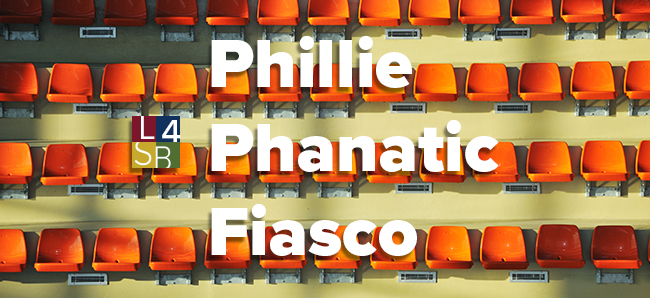The Philadelphia Phillies’ mascot, the Phillie Phanatic, may soon not be the property of the Phillies. How and why this could be are interesting questions that teach us a part of copyright law that not everyone is aware of.
A little background regarding the Phillie Phanatic is appropriate, but I don’t want to get hung up on the details of that case, as there are a lot of moving pieces and the case is in its infancy. The Phanatic was created in 1978 by a company hired by the Phillies. The Phanatic was not a work for hire, but simply created and licensed to the Phillies. After an extension term of the agreements, the Phillies claim that in 1984 the team was granted perpetual rights to the Phanatic.

The creators of the Phanatic are trying to use Section 203 of the Copyright Act. This would allow them to take legal control and ownership of the Phanatic. So, what is Section 203, and how could it be used?
Section 203 allows for creators to terminate a rights agreement for any work that was created after January 1, 1978, assuming certain requirements are met. Importantly, this can even be used for situations where rights were granted in perpetuity. The right to terminate an agreement under this clause can be done in the five year period after 35 years of the original agreement. This does not apply to work for hire. If you do not terminate the agreement within that 5 year period, you lose your right to do so. You would need to give notice of your intent to terminate the agreement, and such notice has to be given no later than two years before the agreement is to be terminated, and no earlier than 10 years before the beginning of the ten year period. There are some registration requirements with the copyright office as well, to take advantage of Section 203.
It is not all that common that you are possibly given a way out of a contract such as this. Section 203 was meant to level the playing field by giving artists and creators the legal power to take back their work after 35 years. And if the artists or creators do not take back their work, Section 203 certainly provides some leverage during the termination period for entering into a new contract. Many artists and creators entered into lopsided agreements in the past, perhaps because they did not have the proper counseling on their side, they just needed some money, or their work at that time just was not that valuable. But after 35 years, all of that can change, and Section 203 allows you to hopefully get out of your work what it is worth.
[Read: Part 2: The Most Common Lawsuits Filed Against Small Business Owners- #5- Breach of Contract]
Section 203 can be tricky, both for the creator and the owner. It is important to speak with a knowledgeable copyright attorney so that you know your rights and can assist you in navigating the process.
And in the meantime, we will keep our eye on the Phillie Phanatic.
Ready to talk to an Attorney? Contact us or give us a call at 505.715.5700
Law 4 Small Business, P.C. (L4SB). A little law now can save a lot later. A Slingshot company.

